TO THE COAST MIDLAND
 Images from the Transport Treasury archive
Images from the Transport Treasury archive
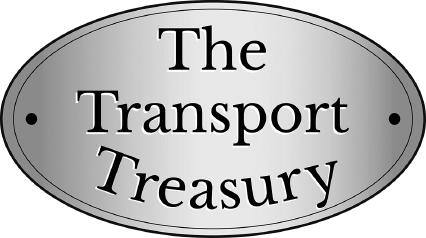
Reviving the memories of yesterday…
© Images and design: The Transport Treasury 2024, Text: Jeffery Grayer.
ISBN 978-1-913251-67-3
First published in 2024 by Transport Treasury Publishing Ltd., 16 Highworth Close, High Wycombe, HP13 7PJ www.ttpublishing.co.uk
Printed in Malta by Gutenberg Press Ltd., Tarxien, GXQ 2902
The copyright holders hereby give notice that all rights to this work are reserved. Aside from brief passages for the purpose of review, no part of this work may be reproduced, copied by electronic or other means, or otherwise stored in any information storage and retrieval system without written permission from the Publisher. This includes the illustrations herein which shall remain the copyright of the copyright holder.
Front cover : Where else could we possibly feature on the front cover but the premier coastal resort served by the London Midland region, its identity given away by the tower visible in the background of this image?
Jubilee class 4-6-0 No. 45697 Achilles in sparkling condition stands at Blackpool’s Central station in this undated view with a service for returning holidaymakers. (Neville Stead)
Frontispiece : A splendid panorama of the railway at Bangor taken from the high ground which surrounded the extensive layout which consisted of the station, goods yard and motive power depot. Full of fascinating details this view shows Black 5 No. 45240, Stanier 2-6-4T No. 42433 and, a firm favourite with depot staff, Aspinall former L&YR 0-6-0 No. 52119 a design which dated from 1889. A DMU working the Amlwch branch, according to its destination blind, completes the motive power on view whilst in the foreground is the yard crane with its supporting match truck. A graceful lattice footbridge spans the depot tracks connecting the platforms with the yard. (Roy Vincent)
Rear cover : A Derby Lightweight DMU working a Whitehaven to Barrow-in-Furness service is captured near Seascale during 1966. Whilst the coastal scenery here looks attractive enough with a wide sandy beach, dunes and one of the greens of the adjacent golf course visible to the right of the track, the ominous presence of the nearby Sellafield nuclear plant can just be glimpsed behind the cutting side on the right. (Larry Fullwood)
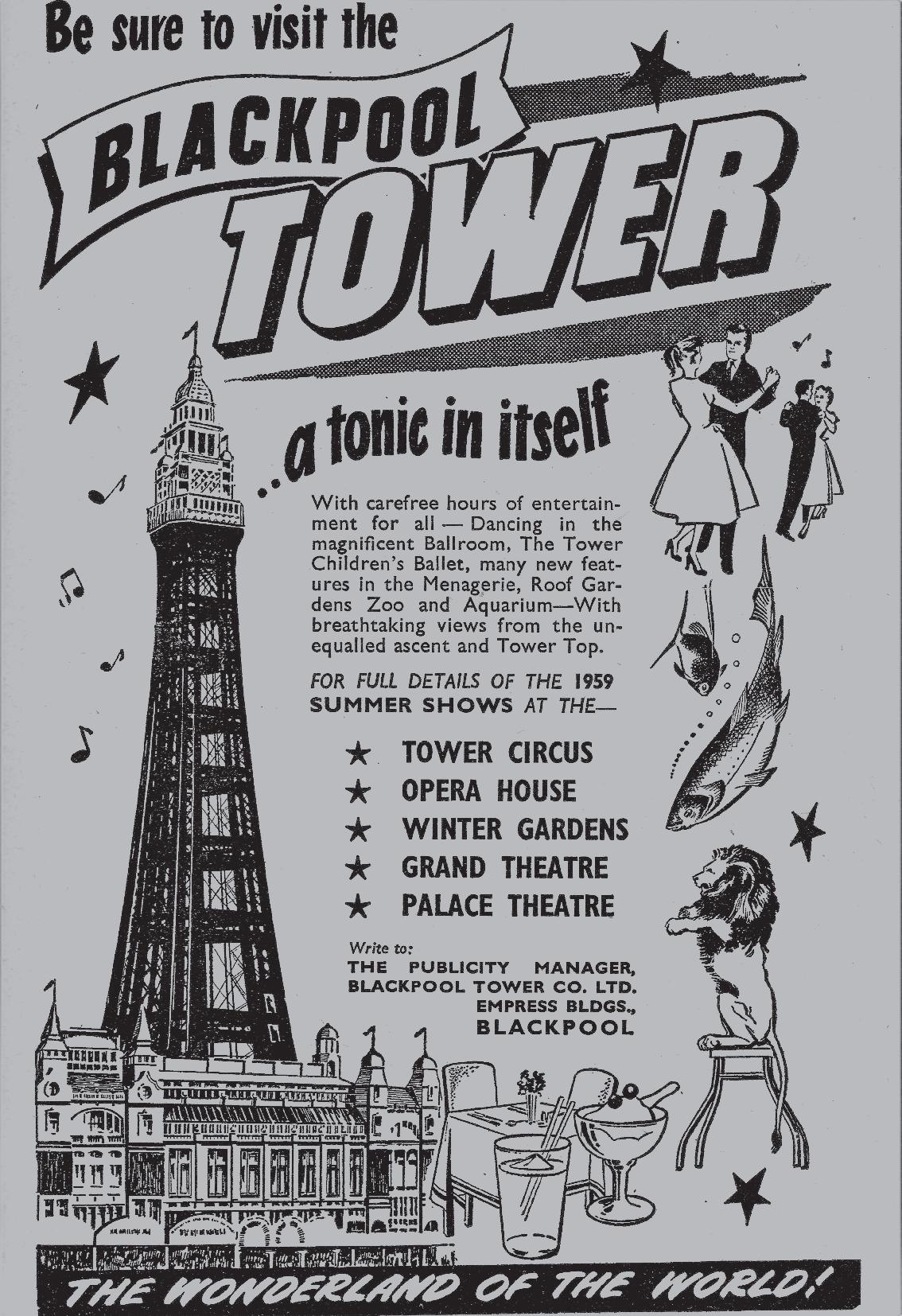
North Wales
Pwllheli, Afon Wen, Caernarvon, Menai Bridge, Britannia Bridge, Amlwch,Holyhead, Bangor, Aber, Llanfairfechan, Penmaenmawr, Conway, Deganwy, Llandudno, Colwyn Bay, Abergele, Rhyl, Prestatyn,
Lancashire
Cumbrian Coast
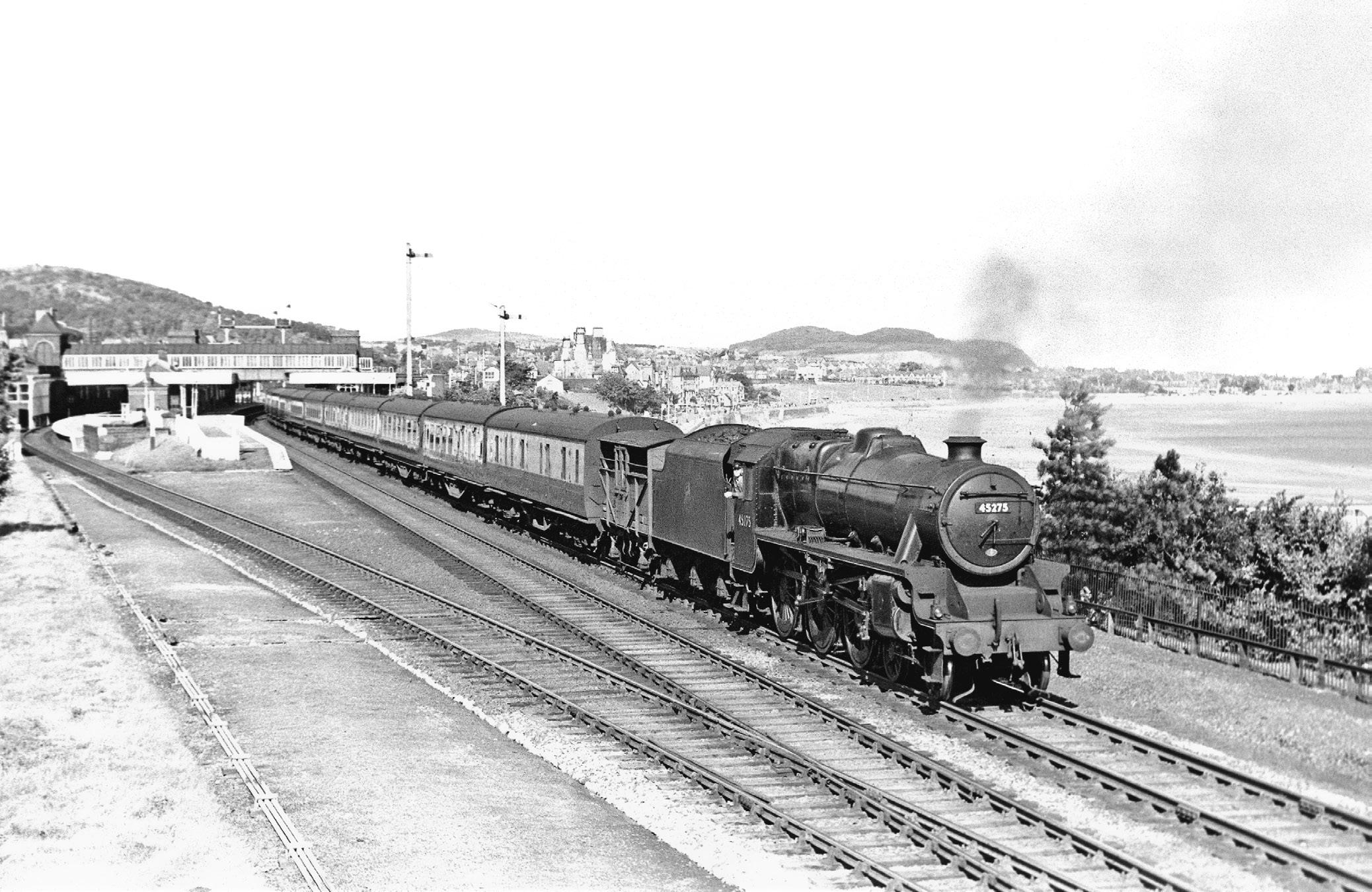
With the waters of the Irish Sea in the background
Black 5 No. 45275 restarts its train from Colwyn Bay in September 1953. Tucked behind the tender is a solitary cattle wagon reflecting the importance of this traffic, much of which came across the Irish Sea “on the hoof” and was landed at Holyhead. There was also a brisk trade in “dead stock” carried in containerised meat vans. (Roy Vincent)
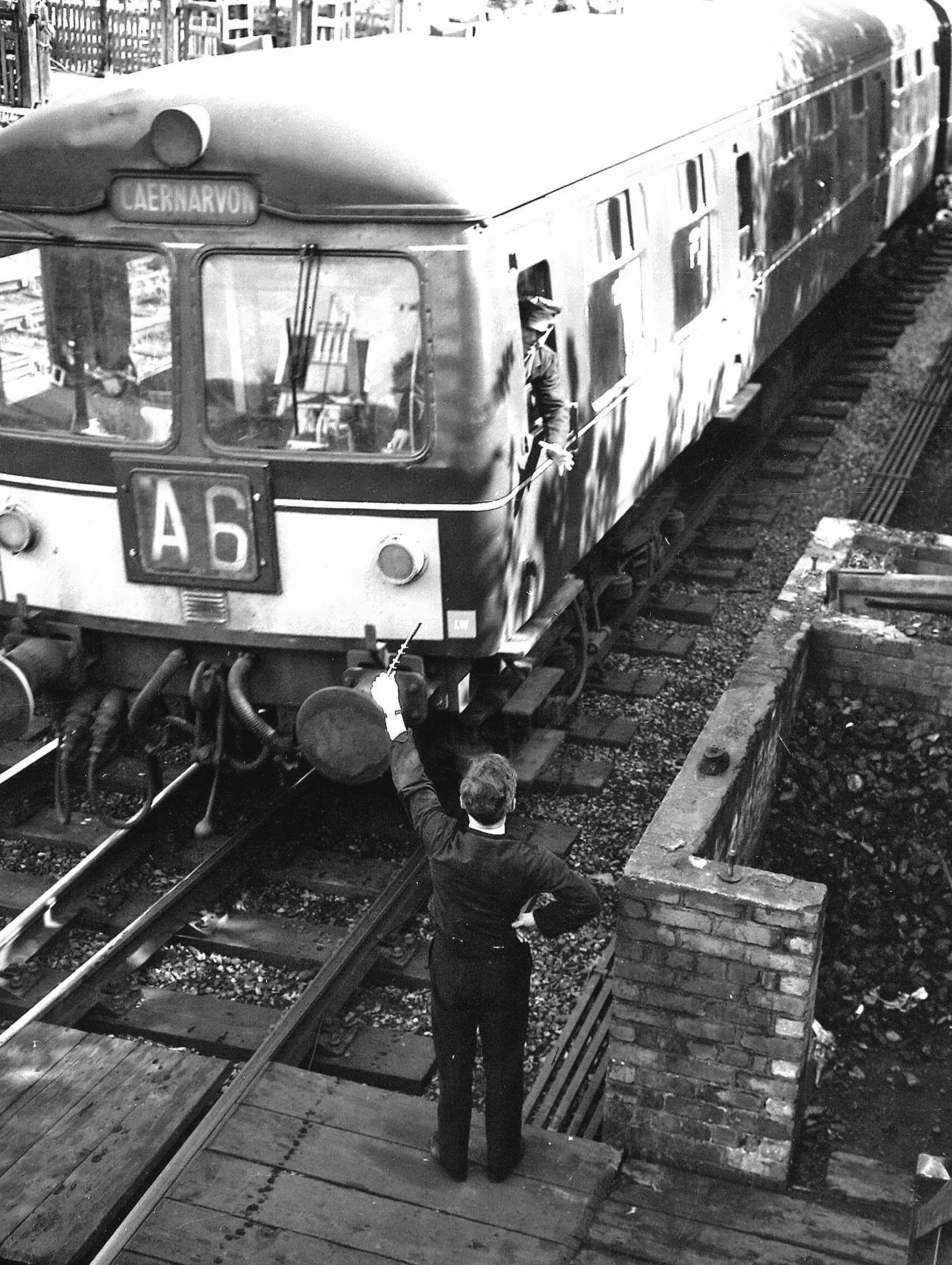
BRITANNIA BRIDGE
Opened in 1850 Robert Stephenson’s famous rail bridge was severely damaged by fire in 1970 and subsequently rebuilt as a combined rail and road bridge opening in phases between 1972 and 1980.
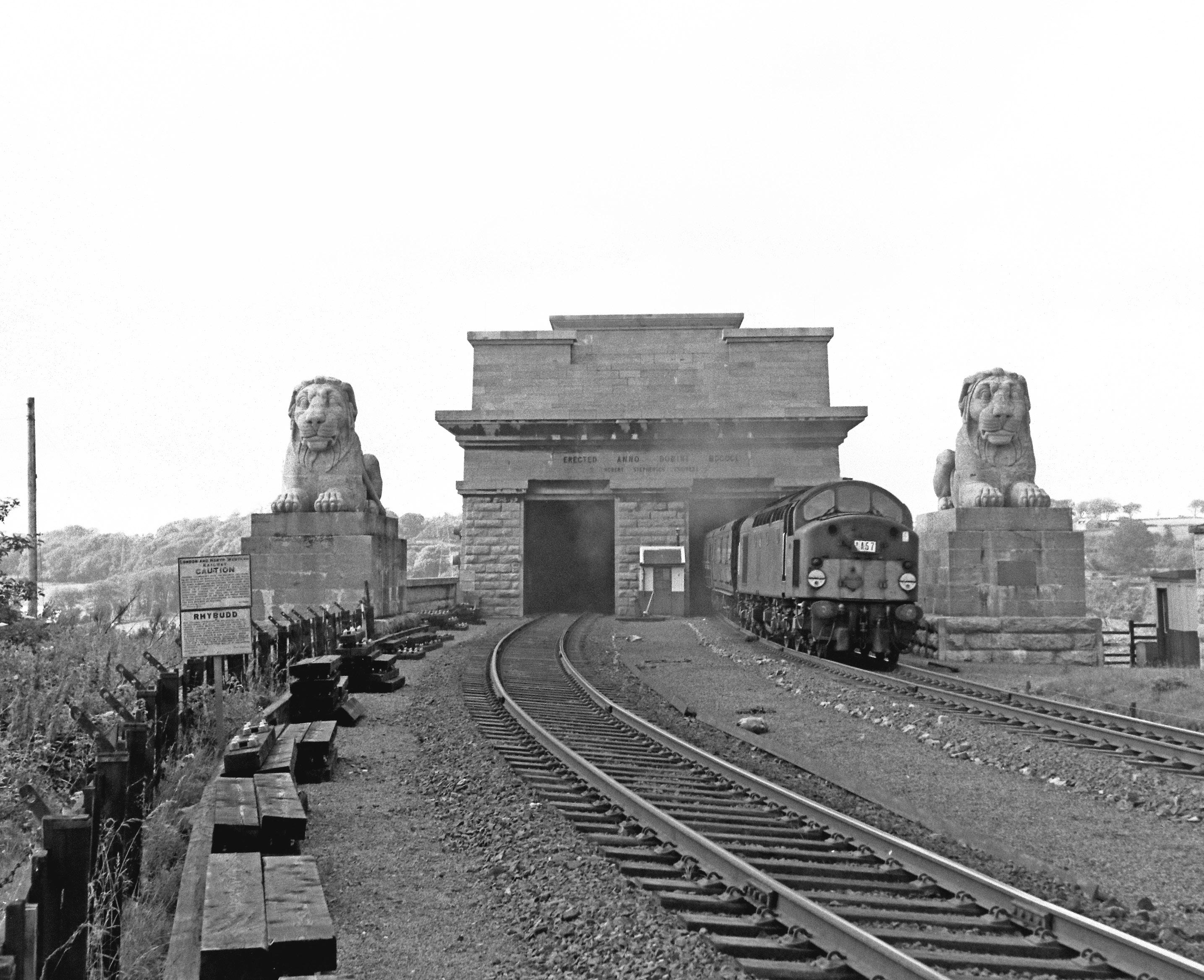
regularly with Camden based locomotives such as Coronation Pacifics or English Electric 2000hp diesel locomotives. Note the bilingual “Caution” trackside signs, still bearing the heading London & North Western Railway, in both English and Welsh. The inscription on the bridge reads “Erected Anno Domini MDCCCL Robert Stephenson Engineer”. (Norman Kneale)

Erupting in a cloud of smoke and steam from the castellated portal of the rail bridge at Conway comes an unidentified 2-6-2T with a down local service passing the 13th. century castle, one of those constructed by Edward I to subdue the Welsh. Constructed in just four years between 1283-7 it is now a World Heritage site containing the most complete set of medieval royal apartments in the whole of the principality. (Milepost)
This onboard shot, taken on 26th. June 1956 affords a better view of the entrance to the rail bridge with the castle in the background. The architect, Francis Thompson, went to the trouble of designing the pylons, as the entrances are so designated, as barbicans containing crenellated turrets, mock arrow slits and battlemented parapets thus complementing the adjacent castle. The wrought iron tubes were completed onshore before being attached to pontoons which were floated into position before being jacked up into position between the abutments ready for the opening in 1849. A rake of “blood and custard” coaching stock is parked in the siding to the right. (A. E. Bennett)

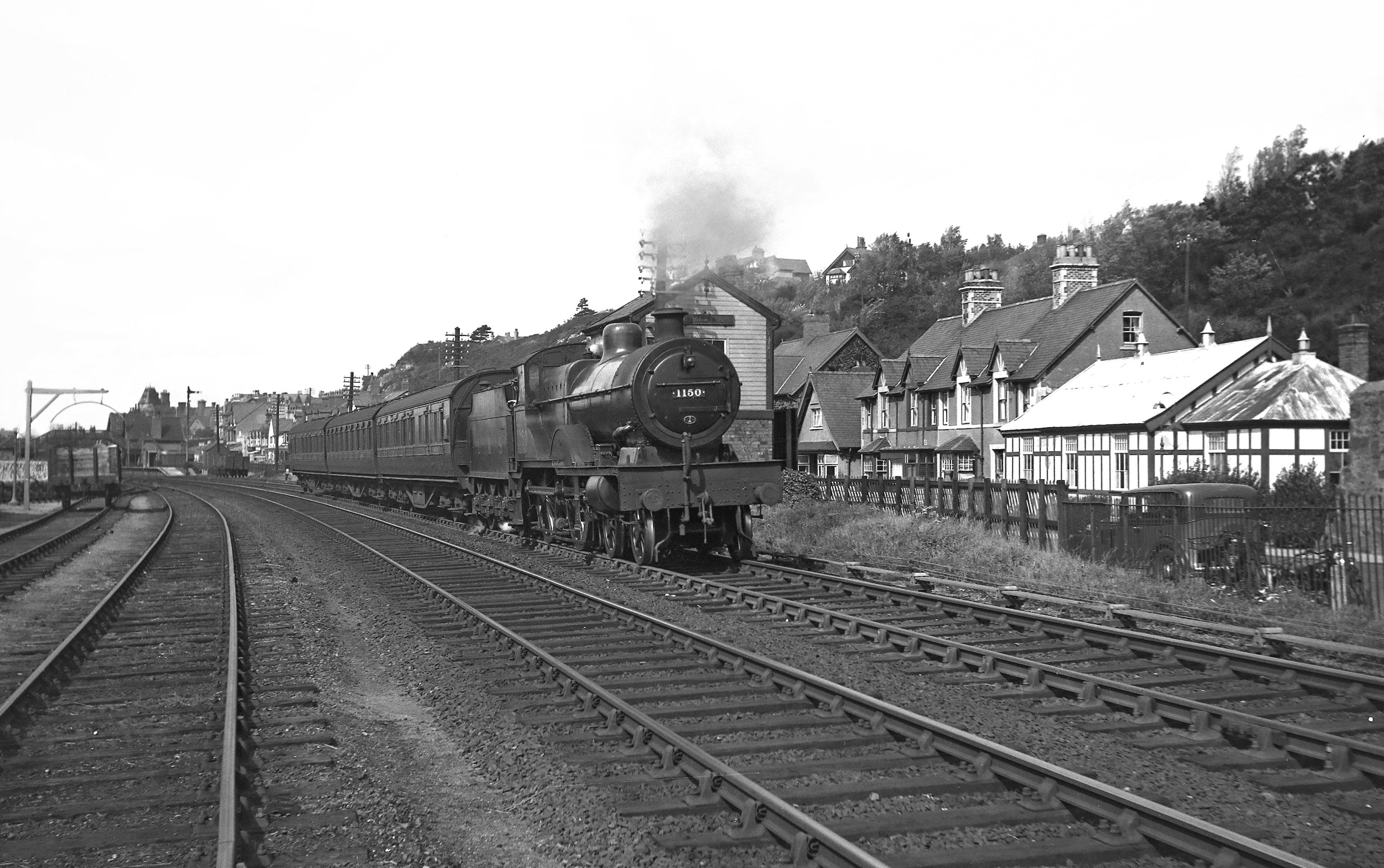
DEGANWY
Deganwy, a mile and a half from Llandudno, is in one way unique. Although on the North Wales coast it faces south and south west thus making the most of the sun. Yet even on the hottest days there’s always a cooling sea breeze so that the heat never becomes oppressive. Fine views over the Conway estuary and of the Penmaenmawr and Carnedd mountain ranges are seen from Deganwy.


Above. No.1150 having just passed Deganwy station and signalbox 4P 4-4-0, sporting LMS on the tender, makes a fine sight as it skirts the town, which sits in a favoured position on the Conway estuary, in this image taken around the time of nationalisation in 1948. Built in 1925 this Fowler compound was not renumbered 41150 until May 1949 and spent several years at this time in North Wales being allocated to Holyhead and Llandudno Junction sheds between 1947 – 1954. In this view it is carrying shedplate 7A which was the code for Llandudno Junction applicable between 1935 – 1952. It ended its days at Trafford Park from where it was withdrawn in September 1957. (Flint and Harbart)
Left. Having just negotiated Marine Crescent’s level crossing, whose gateposts can be seen in the foreground, this pair of Derby Lightweight DMUs calls at Deganwy’s down platform on 26th. June 1962 with a service from Llandudno. It may possibly be operating one of the ‘Welsh Dragon’ tours, see page 68, which ran between Llandudno and Rhyl during the holiday season although in 1962 the DMU service had been replaced by a steam powered one. The coaching stock seen in the background is on land that formed part of Deganwy docks which were constructed by the L&NWR to handle slate traffic. With the decline in slate traffic, boat building became important in the dock area and after WW2 BR used some of the sidings to store coaches that were used for such specials as the ‘Land Cruise’ trains and to house excursion coaching stock that had brought hundreds of day-trippers to Llandudno. Even Royal Trains were from time to time temporarily housed there overnight. Today a yacht marina, hotel and spa occupy the site. (W. A. C. Smith)
WELSH DRAGON
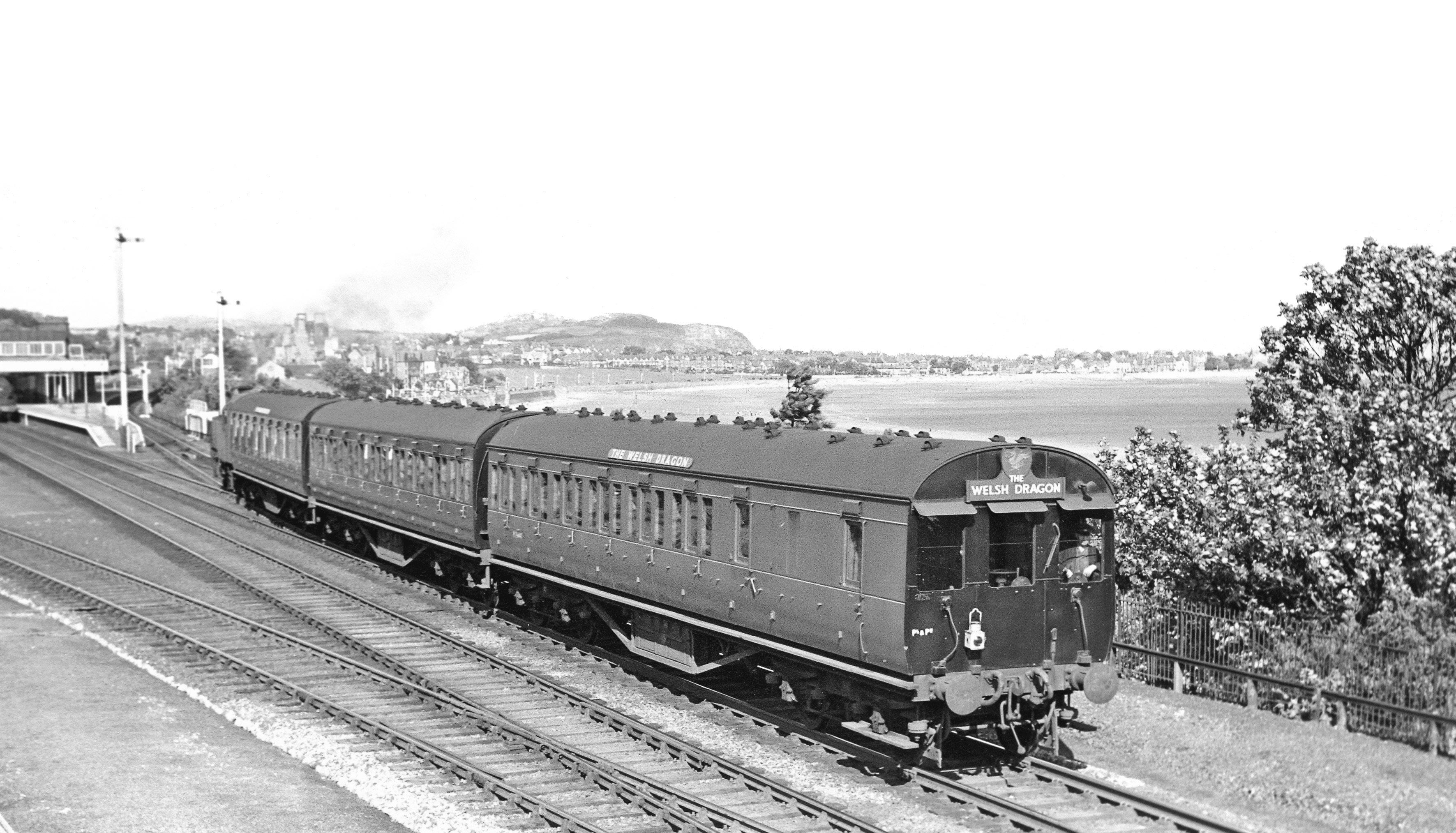 (Roy Vincent)
(Roy Vincent)

Top right. In this view Ivatt tank No. 41285, carrying another diminutive headboard, departs Colwyn Bay propelling three non corridor coaches on 26th. August 1953, the third year of its operation. Running between Rhyl and Llandudno it offered eight return trips on Mondays - Fridays with six on Sundays, thus providing a useful service for holidaymakers at all resorts in between. It did not run on Saturdays which was then the usual holiday changeover day and which of course saw line capacity used to the maximum. The last departure from Llandudno was not until 10:45 pm thus giving tourists the chance to avail themselves of the shows on offer at the resort. It was usually operated by a Rhyl based Ivatt tank, although in the summer of 1957 Derby lightweight DMUs took over until steam returned in 1962.
(Roy Vincent)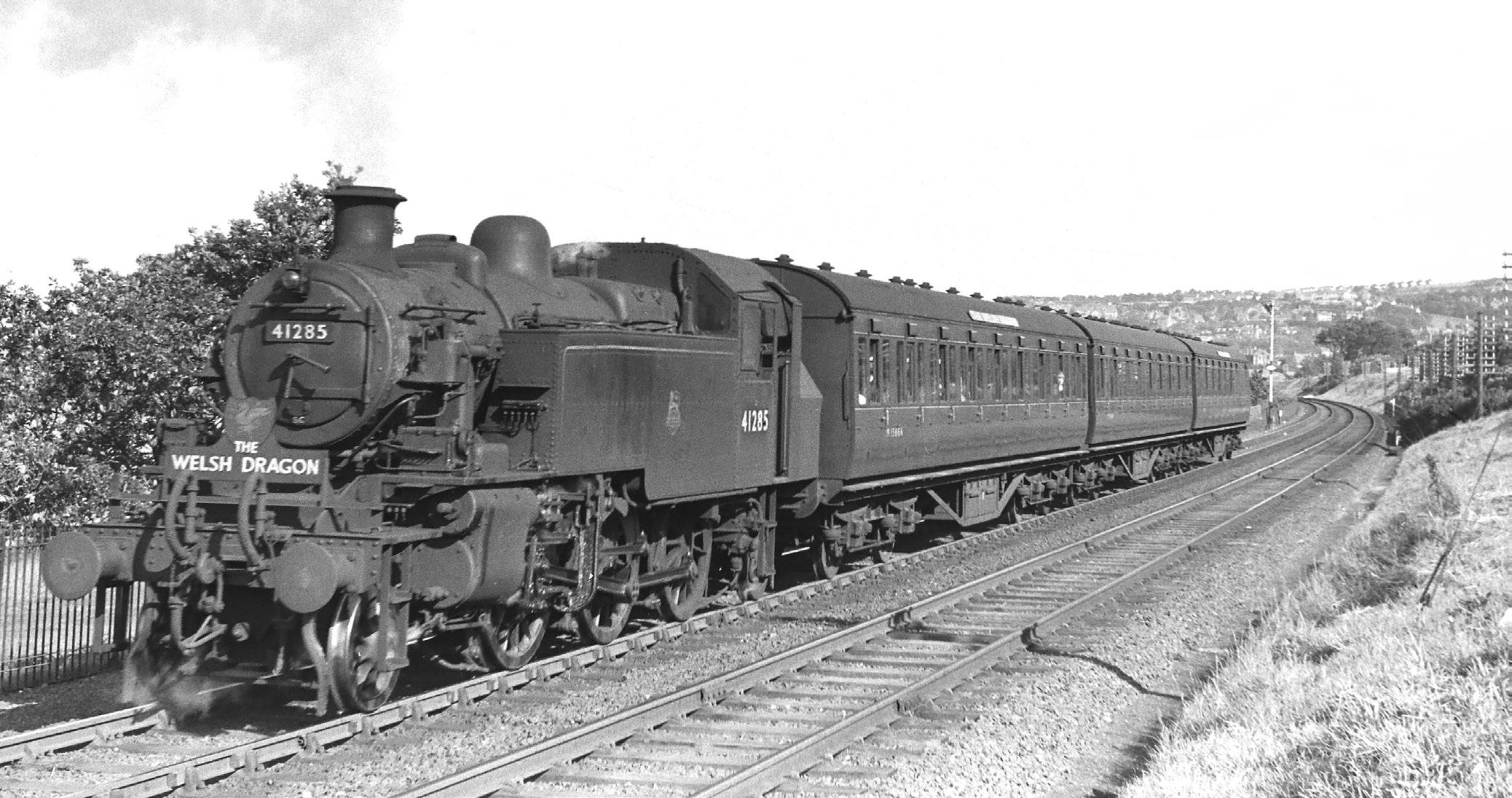

Left. We could not leave the subject of trains for holidaymakers without featuring one of the many seaside tourist railways that could be found in resorts throughout the country. Here we see the Colwyn Bay Miniature Railway which was opened by the local council in the late 1940s and sold to a local operator in 1952. Starting at the corner of the Promenade and The Dingle it ran for approx. 500m westwards towards the pier seen in the background to this view dated 24th. August 1953. Motive power was a 4-6-0 steam locomotive named Prince Charles dating from 1949 and built by Carland Engineering. Switching to diesel power in 1972 a new locomotive named Dylan was operated until closure of the line in the late 1980s with the track being taken up in 1989. The pier opened in 1900 and like so many Victorian piers has been the subject of much local debate regarding restoration following storm and fire damage. Today just a truncated pier with some salvaged ironwork from the former structure remains, the bulk having been removed. (Roy Vincent)
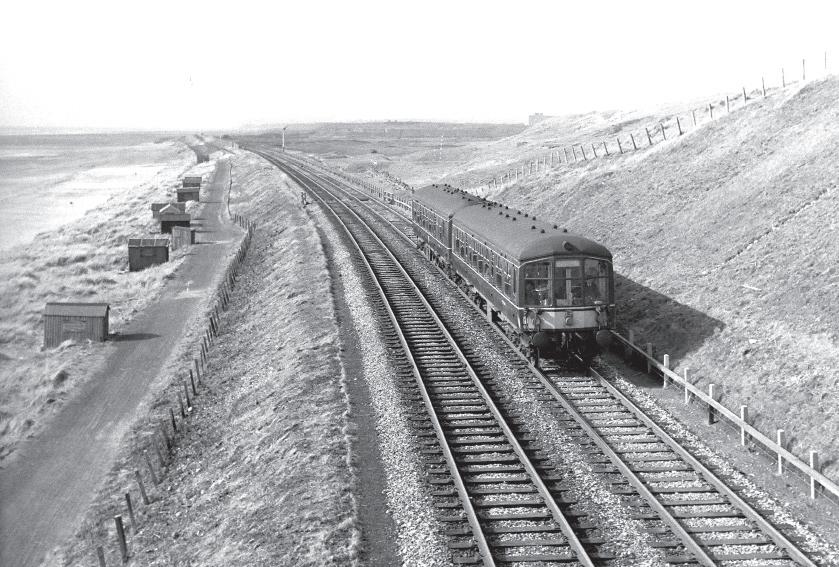
The London Midland Region of British Railways served three main coastal aeas – North Wales, Lancashire and the Cumbrian coast bordering the Lake District. There were several major resorts in these locations including Blackpool, Southport, Morecambe, Colwyn Bay, Llandudno, and Rhyl together with many smaller resorts such as Grange-over-Sands, New Brighton, Prestatyn and Pwllheli. Many benefitted from through trains from major urban centres including the capital and peak holiday trains conveyed vast crowds for their annual holiday by the sea. Some forty of these resorts are included in this volume which also features a variety of motive power encompassing steam, diesel and electric traction.

ISBN 978-1-913251-67-3



